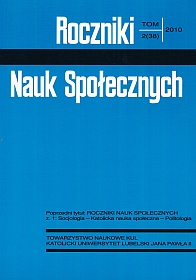Stosunek episkopatu Polski do reform samorządowych w II RP
Abstrakt
The approach of the associates of the Polish Episcopate of the II PR towards the self-rule was a combination of their own political preferences and the papal doctrine. The Episcopate was differentiated in the respect of political conducts and approach. Until 1926 the bishops approach towards the political activity was “concerned” and tightly connected with the political platforms of National Democracy (ND) and Christian Democracy (ChD).
The government camp, as a political contender of National Democracy, aroused mistrust among the hierarchs. After the The May Coup d’Etat (1926), the bishops’ political acitivity ceased to be manifested so clearly. This was due to the Church’s apolitical program, professed by Pope Pius XI. Thanks to him, sacation for natural corporatist initiatives ( self-government included) as basics for a new political system based on decentralization and active populace rose among the clergy.
The March Constitution (1921), by refering to the rule of broad latitude and approving the non-govermetal institution functioning next to the government, contibuted to inflaming the spirit of self-gorenment and was appreciated by the clergy. The ordinaries approach to the decisions of April Constitution (1935) was not so uniform. The April Constitution, parting from the outlook of duality of public administration brought the limitation of the actual selfgoverning, subordinating the local government to the central government. The government’s vision of a strong, centralized country, in which the citizen rights are a subject of greater control arouse anxiety and criticism among the members of the Episcopate.
Copyright (c) 2010 Roczniki Nauk Społecznych

Utwór dostępny jest na licencji Creative Commons Uznanie autorstwa – Użycie niekomercyjne – Bez utworów zależnych 4.0 Międzynarodowe.


